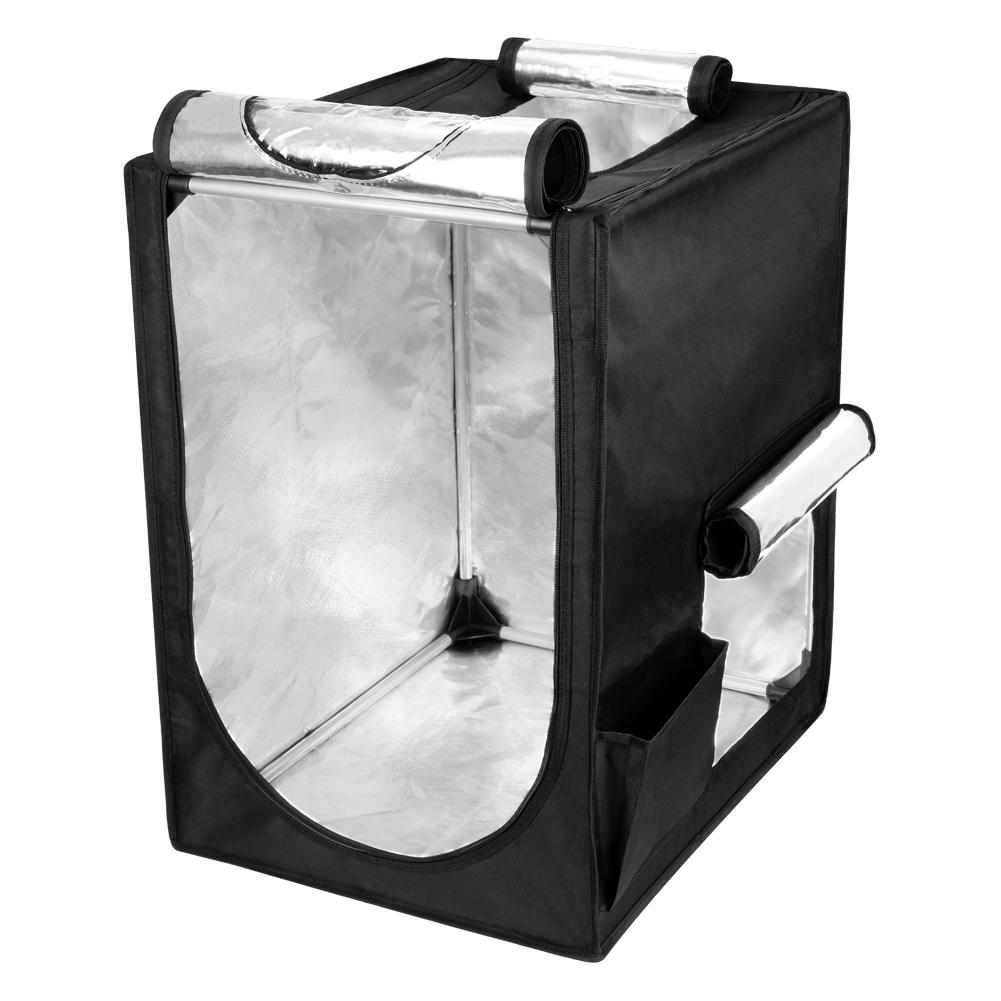- Z Seam | How to Hide & Avoid | Cura & PrusaSlicer - April 20, 2024
- Qidi Tech Q1 Pro – Best Orca Slicer Settings & Profile - April 9, 2024
- Creality Ender-3 V3 Review – Will CoreXZ be the New Trend? - March 27, 2024
Disclosure: Links marked with * are Affiliate Links. I earn from qualifying purchases if you decide to make a purchase through these links – at no additional cost for you!
The Creality 3D printer enclosure* not only provides a constant ambient temperature necessary for certain filaments (e.g. ABS), it is also dust resistant, flame retardant and dampens printing noise.
So you can upgrade an open 3D printer for relatively little money by giving it the ability to process more exotic materials with this enclosure.
In the early days of the 3D printing hobby, many people built their own 3D printer enclosures from boards or small pieces of furniture. However, this is not only questionable from a safety point of view, but also takes up more space and usually doesn’t look as nice as the enclosure from Creality.
I tested this enclosure on an Ender 3 V2 to print ABS with it. How the temperature distribution really is and what other features the enclosure has in store, you will find out in this extensive hands-on review.
The enclosure is available in 2 sizes:
(If you don’t own one of these Creality 3D printers, the enclosures are still compatible if you choose the right size and pay attention to the openings).
Check Price at:
Table of Contents:
- 1 Key Takeaways
- 2 Who Should Buy the 3D Printer Enclosure from Creality?
- 3 Pros & Cons – Creality 3D Printer Enclosure
- 4 Scope of Delivery – Creality 3D Printer Enclosure
- 5 Setup – Creality 3D Printer Enclosure
- 6 Features – Creality 3D Printer Enclosure
- 7 Technical Specifications – Creality 3D Printer Enclosure
- 8 Conclusion: Is It Worth It?
Key Takeaways
- creates a homogeneous ambient temperature
- gives you better printing results
- a must-have upgrade for exotic materials like ABS or Nylon
- reduces maintenance work (dust-proof)
- high-quality materials
- very good processing
- offers space for many 3D printer types
Who Should Buy the 3D Printer Enclosure from Creality?
The 3D printer enclosure from Creality is suitable for anyone who wants to upgrade their open 3D printer for exotic materials such as ABS or nylon. It is also suitable for those who want to improve the results of their standard filaments. It also offers even more advantages such as a flame retardant effect, noise reduction and dust protection.
Pros & Cons
– Creality 3D Printer Enclosure
PRO:
- generates a constant ambient temperature
- reduces noises
- protects the 3D printer from dust
- flame retardant material
- many openings for operating the 3D printer
- tool bag
CON:
- interior becomes very dark -> retrofitting LEDs makes sense
- strong smell after unpacking (disappears after 2-3 days)
- the flame-retardant aluminum layer can obstruct WiFi signals
Scope of Delivery
– Creality 3D Printer Enclosure
The 3D printer enclosure from Creality* is delivered compactly packed. The scope of delivery includes a short manual, the support struts, plastic corners and the cover.
Setup – Creality 3D Printer Enclosure
The assembly is done in a few minutes. You have to insert the support rods into the plastic corners and put the covers over them. It is best to open the openings so that there is not so much tension and the assembly becomes easier.
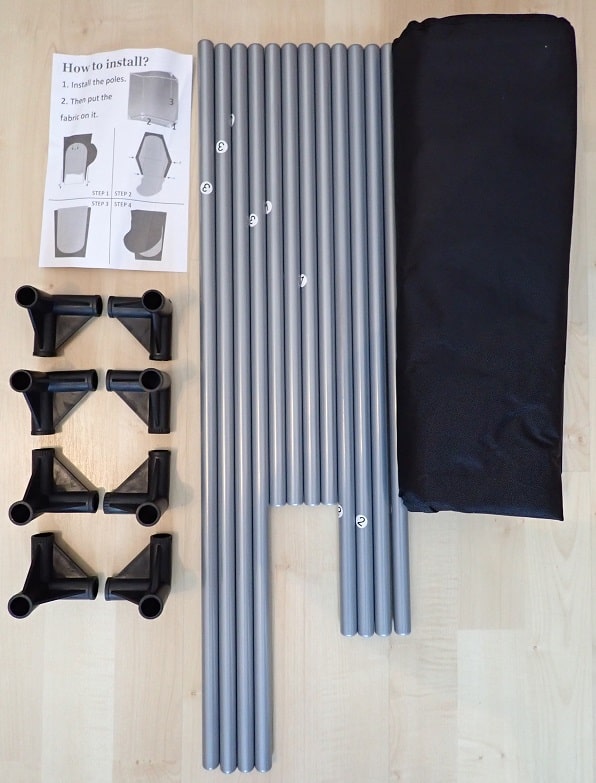
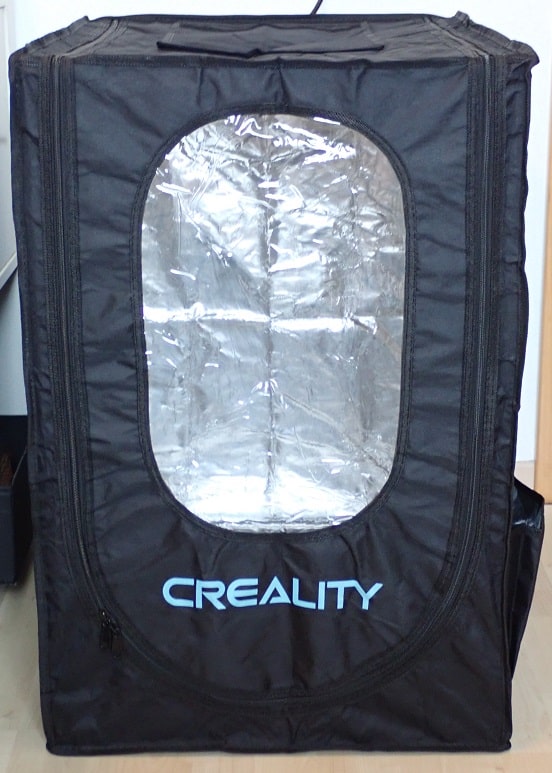
Features
– Creality 3D Printer Enclosure
At first glance, it may sound silly to talk about the features of a 3D printer “tent”, however, there really are a few features that make this tent a full-fledged 3D printer enclosure!
Constant Temperature Distribution
A constant ambient temperature is necessary for many filaments to achieve good results. It is also often advantageous if the ambient temperature is warmer than the standard room temperature.
I tested the enclosure with an Ender 3 V2. After the printer had heated up and the temperature inside had settled, I measured the temperature at 8 different points inside the enclosure.
I measured at typical ABS temperatures:
- Nozzle temperature: 240 °C
- Print bed temperature: 70 °C
As you can see from the sketch, the temperature distribution is quite homogeneous. A deviation of about 2 °C between the upper and lower area is pretty good without fans circulating the air.
The maximum temperature reached was just under 39 °C. This is better for ABS than a normal room temperature of about 22 °C (depending on the weather and region, of course), but it is still generally a bit low. Normally you should print ABS with an ambient temperature between 60 and 70 °C. At these temperatures, there will be no warping and no cracking during cooling.
Nevertheless, most filaments benefit from a slightly higher ambient temperature. Especially if you print in winter, this enclosure is a good choice to increase the ambient temperature a bit. Also PLA or PETG do not like it when the temperature is too low.
And if you want to raise the temperature inside even further, for example to create the perfect ambient temperature for ABS, you can install a small heater. There is definitely enough room for that.
Almost Airtight
The Creality 3D printer enclosure is almost hermetically sealed. Due to the very well-made zippers and the very strong Velcros, very little air gets in or out. Even through the very dense fabric with the aluminum foil of the enclosure, no air exchange can take place.
This is a great advantage for all other properties of this enclosure. To get the constant temperature distribution, the noise reduction, the dust resistance or the flame retardant property, it is very important that the enclosure is as tight as possible.
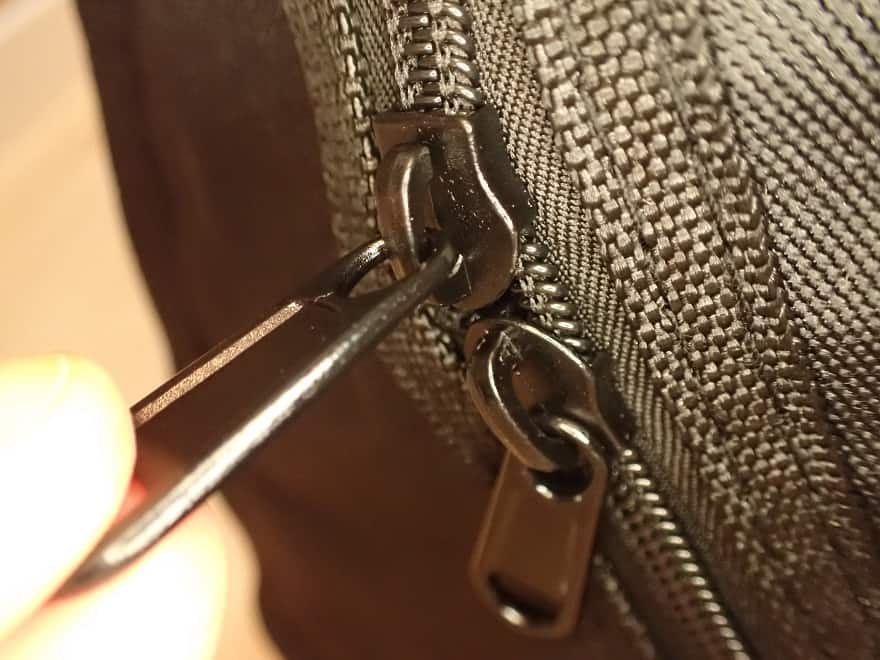
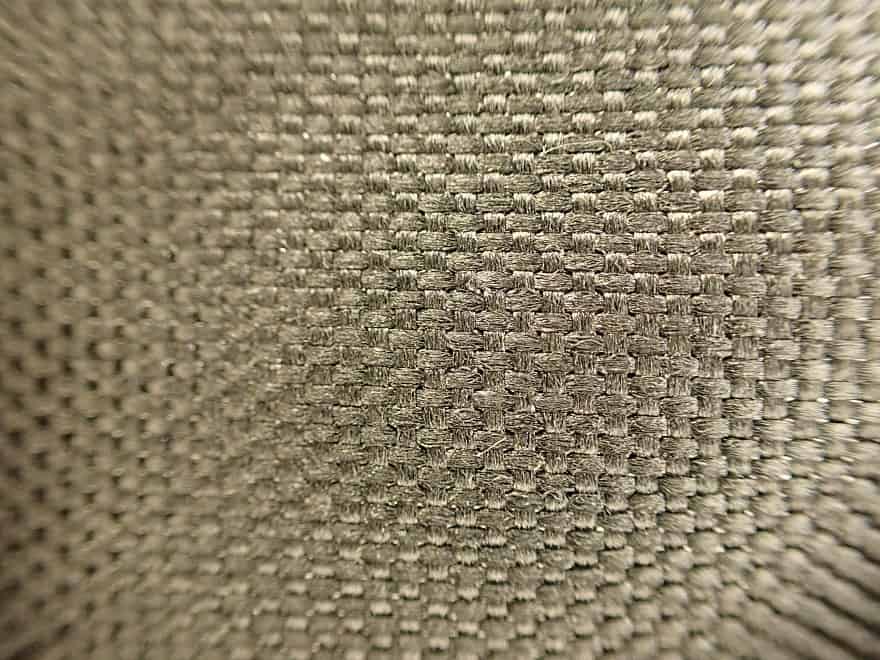
The Velcros have surprised me positively directly when unpacking because they are really very strong and can be completely closed. In other products, they are often only made of cheap standard ones that let a lot of air through and can not be completely closed.
The only actual hole I noticed is the passage for the cables. Nevertheless, the resulting hole is minimal.
Noise Reduction
Because the enclosure is so tightly sealed, it also muffles some of the noise from the 3D printer. It’s not much, but it can definitely make a difference with loud machines.
In my test, I used a 3D printer that is already really quiet. Without the enclosure, only about 40 to 41 dB are generated directly in front of the Ender 3 V2 in an otherwise quiet room. The enclosure reduced the noise by about 6 dB.
It’s not the world, but still noticeable.
- Without enclosure: approx. 41 dB on average
- With enclosure: approx. 35 dB on average
Dustproof
The maintenance effort of a 3D printer is largely due to dust. The dust settles on the print bed, the print head, the toothed belts and all other parts of the 3D printer.
Especially with the moving parts, this can lead to malfunctions or jamming. Also, if you don’t store the filament airtight between prints, it will get dusty if you don’t store it in the enclosure.
Dusty filament quickly leads to blockages in the nozzle and can ruin your day. Thanks to Creality’s very tight enclosure, the printer hardly ever gets dusty anymore and you save yourself a lot of maintenance work. You only need to dust and maintain the 3D printer much less often.
Flame Retardant Material
One of the best features for me is that the material of the enclosure is made of flame retardant fabric and aluminum foil inside. This combination makes it very difficult for a fire to spread from the inside to the outside.
However, it should be emphasized here that it is “only” flame retardant and not fireproof. Flame retardant means that it inhibits and slows down the spread of fire. Because the enclosure is almost hermetically sealed, it is also very difficult for a fire to supply itself with enough oxygen. This near hermetic seal and flame retardant enclosure helps to make it very unlikely that a house fire will result from a 3D printer accident.
So, together with a smoke detector and fire extinguisher, worry-free overnight printing is possible.
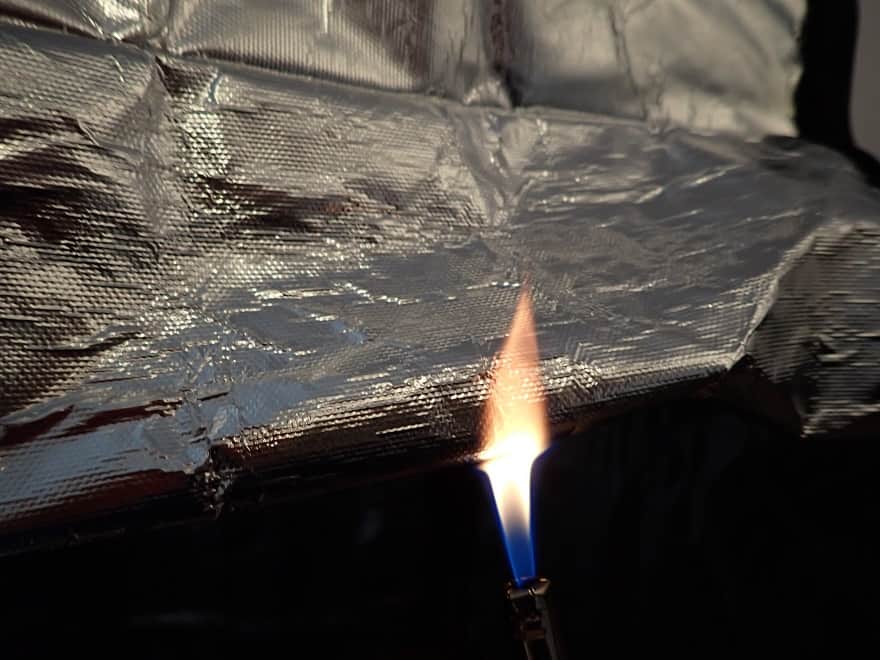
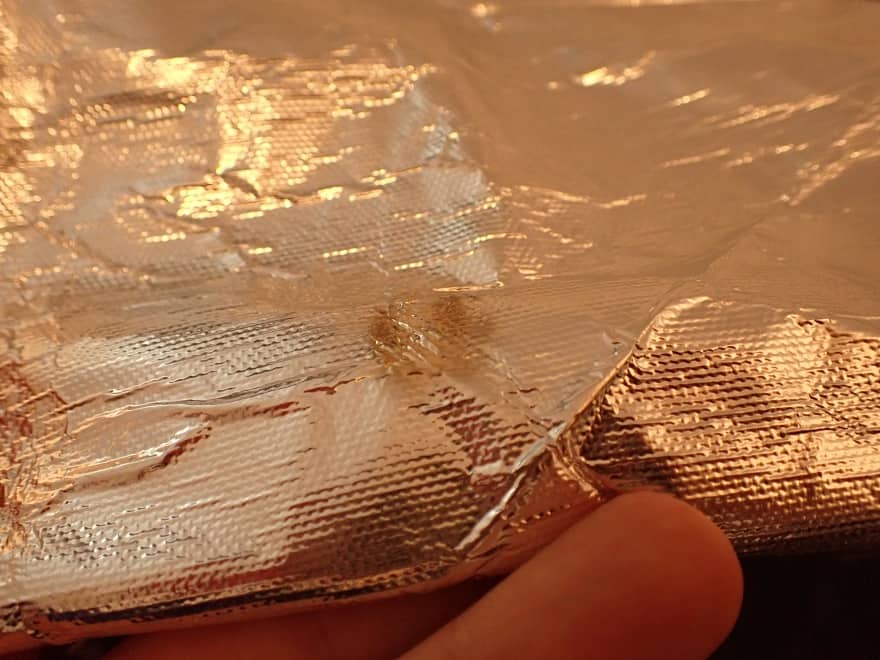
To prove the flame retardant property of the material I tried it with a lighter! I held the flame to one spot for several seconds. The only thing that could be seen afterwards was a dark spot. The material was not burned nor did it show any holes.
After this test, I had a clear conscience to start a 3D print that lasted almost 20 hours.
Many Openings
The enclosure has a total of three openings through which you can operate your 3D printer. The largest opening can be opened from the front and opens the entire front and upper side of the enclosure. This allows you to insert the 3D printer, perform maintenance work, change filaments, remove print objects, etc.
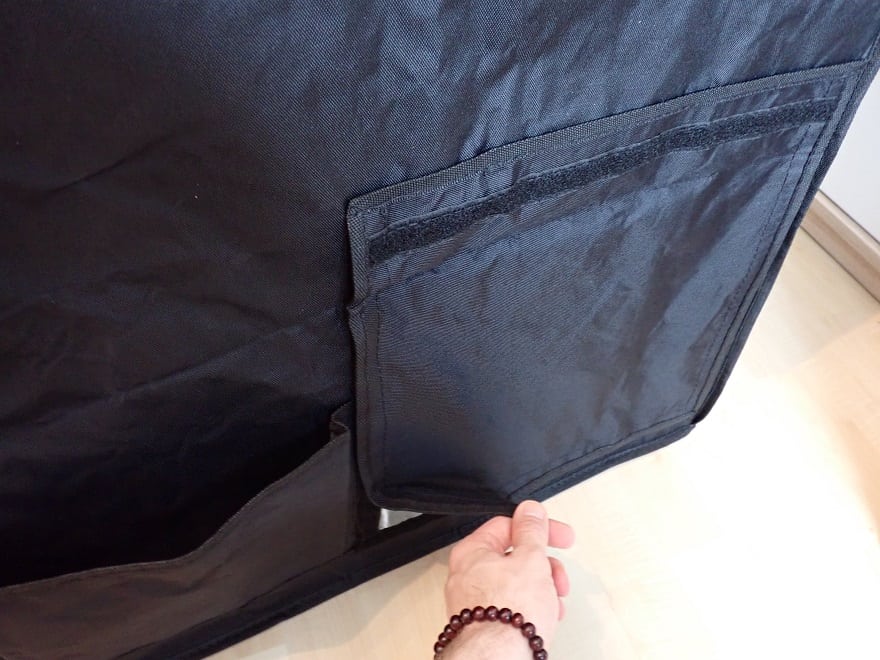
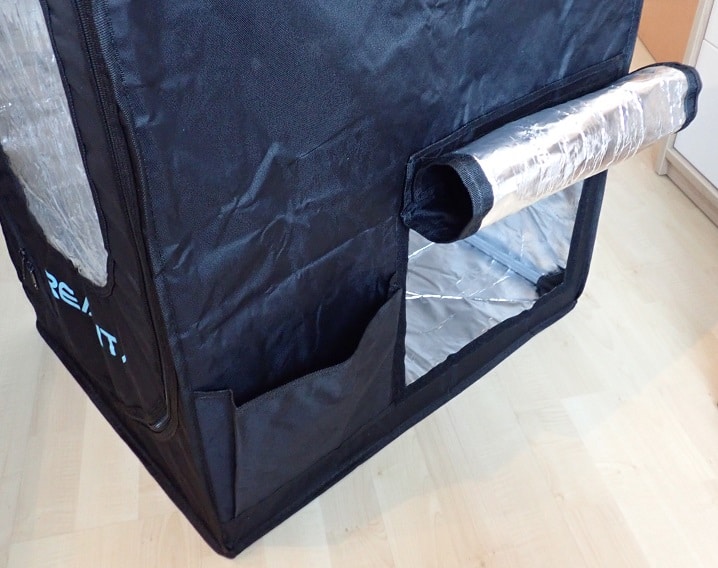
On the top side, there is also a smaller opening in the enclosure if you want to let some air escape from the enclosure or you need some space for your filament holder. There is also a small opening on the right side for operating 3D printers that have their display on this side.
Even if the price would have been a bit higher, I would have placed such an opening on the left side as well. When you perform maintenance work on your 3D printer, you can sometimes only access the extruder or other components from the left side.
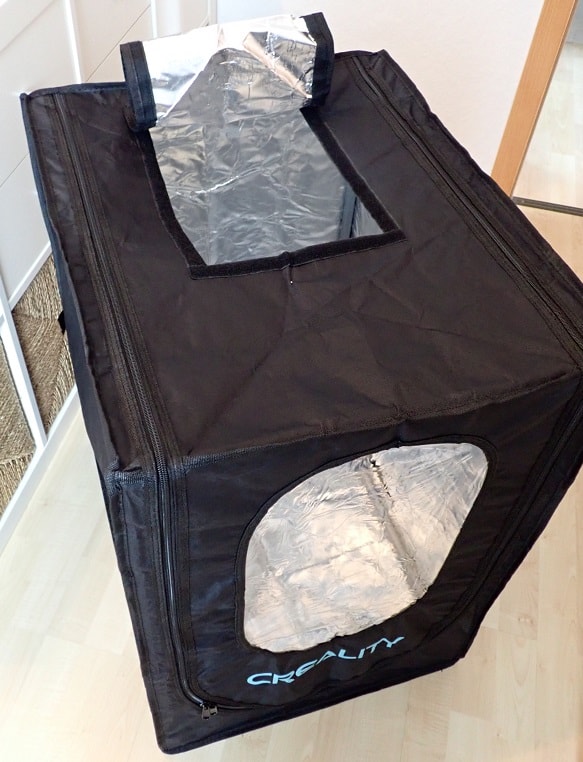
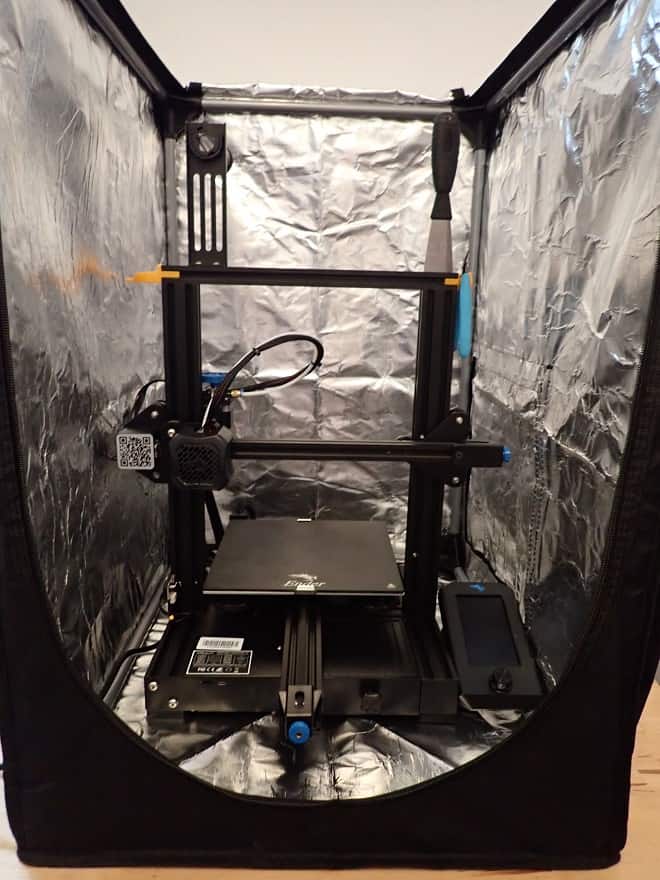
This can be a bit difficult if you have to come from the front or top because there is no opening on the left side.
Some users are also confused by the placement of the hole for the cables. It is placed on the front left side. However, I find the location quite plausible, as you can shut down the power faster if there is an emergency.
The enclosure is quite large and when the 3D printer is inside, it is difficult to move the whole thing. If the power supply is hidden behind it, it becomes difficult to reach it in an emergency.
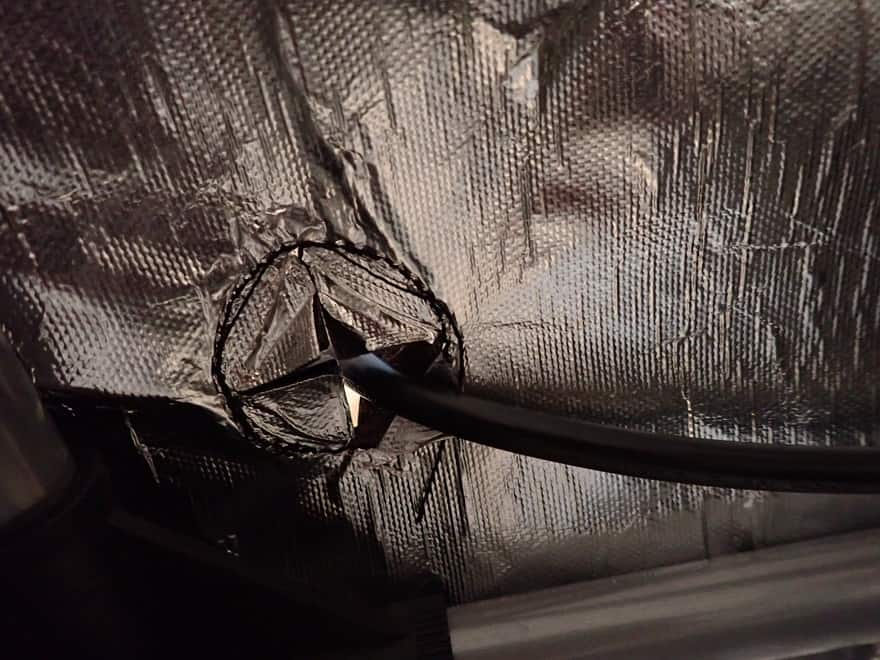
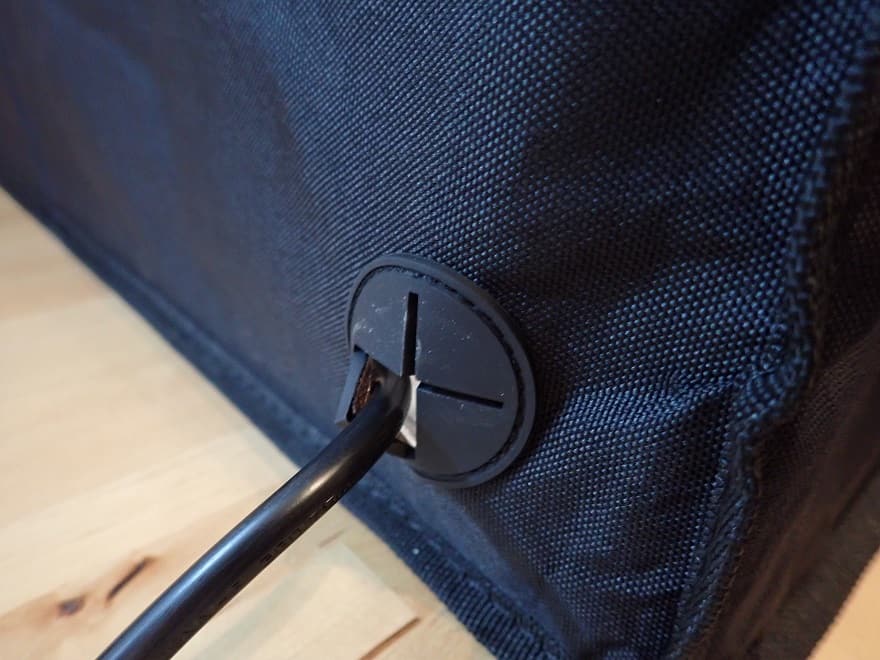
Transparent Foil for Monitoring the 3D Printer
A transparent foil is installed at the front of the enclosure. Through this, you can see what is happening inside. This is essential for monitoring the 3D printer and a prerequisite for a good 3D printer enclosure.
As for this window, I noticed two negative things:
- The foil is somewhat wrinkled due to the packaging, which obstructs the view. A wrinkle-free packaging, e.g. rolled, or similar, could improve this.
- It is very dark inside the enclosure despite the transparent film. For my tests, I used the flashlight of my smartphone to look inside. In the long run, however, I will get the LED package from Creality*. Otherwise, it is difficult to detect printing errors early on.
Toolbag
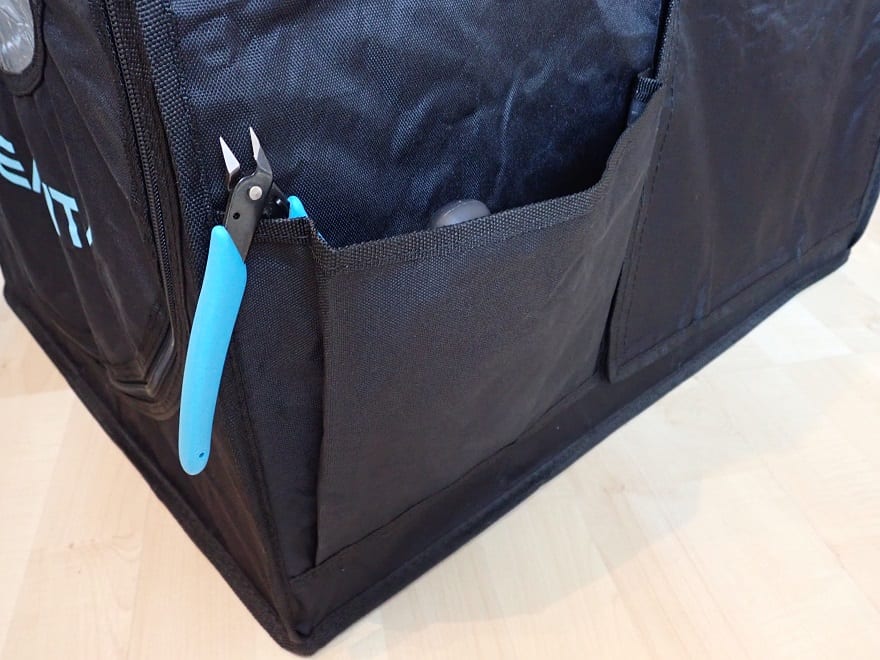
On the right side of the enclosure is a small tool pocket. Here you can store the tools you often need, such as the side cutter and the spatula.
You should definitely not load this bag too much, otherwise, it can warp the enclosure. A filament roll is definitely out of place here.
Technical Specifications
– Creality 3D Printer Enclosure
- Compatible with: Ender 3, Ender 3 Pro, Ender 3 V2, Ender 5
- Size inside: 445 x 565 x 685 mm
- Size outside: 495 x 615 x 735 mm
- Features: Constant temperature distribution, noise damping, dustproof, flame retardant, many openings, tool bag
Conclusion: Is It Worth It?
The question of whether the Creality 3D printer enclosure* is worth it can be answered with a resounding “yes”. The only case when it won’t be worth it for you is if you want to print exclusively with PLA.
Without an enclosure, it is very difficult to print ABS without extreme warping or other printing errors. What I also like about this enclosure is that it lets me sleep soundly at night and the maintenance of the 3D printer is easier or has to be done less often (dust protection).
For me, this enclosure is definitely a hit, which makes me recommend it to anyone who has a 3D printer without an enclosure.
The times are definitely over where you have to build a 3D printer enclosure out of boards or small IKEA tables! This enclosure is cheap, quick to assemble, offers you everything you need in an enclosure and also increases your safety. For these reasons, this enclosure is extremely popular and often out of stock.
Check Price at:
Disclosure: This website is the property of Martin Lütkemeyer and is operated by Martin Lütkemeyer. Martin Lütkemeyer is a member of the Amazon Services LLC and other Affiliate Programs. These are affiliate advertising programs designed to enable websites to earn advertising revenue through advertising and linking to Amazon.com and others. Links marked with * are affiliate links.

